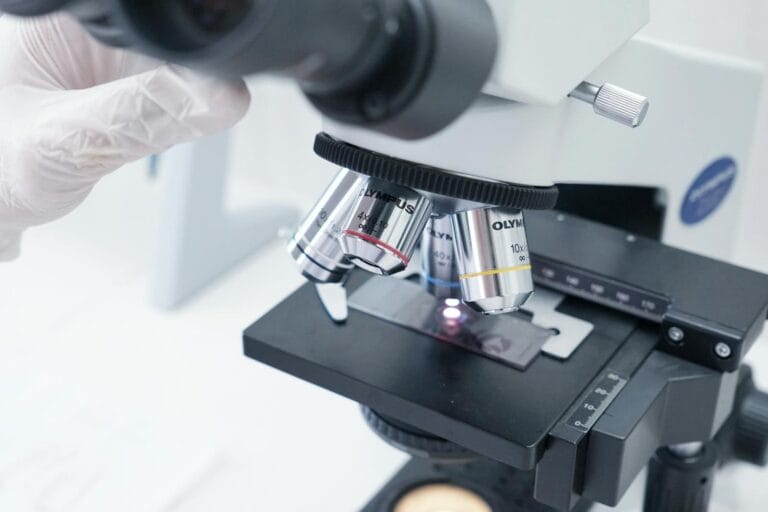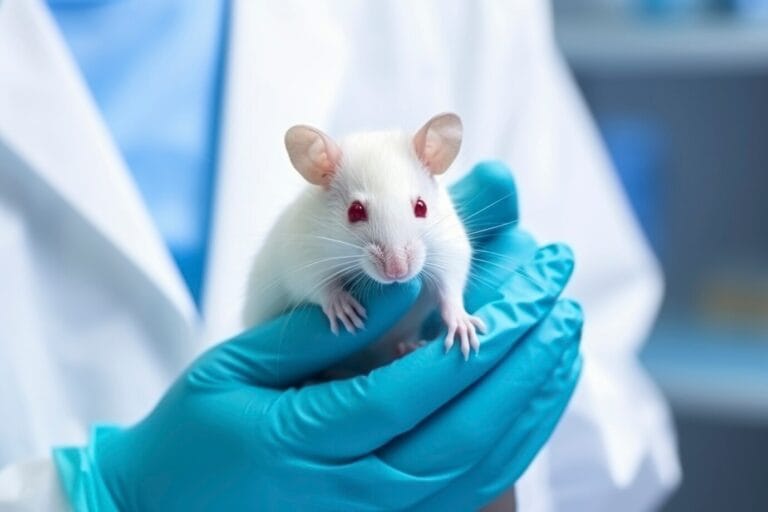
In Silico Approach as an Alternative Method for Pesticide Toxicity Testing

- The Potential of In Silico Methods for Pesticide Development
- The Application of In Silico Methods for Pesticide Product Testing in Various Countries
In today’s modern era, where there is a growing demand for environmentally friendly products and ethical research processes, the pesticide industry faces increasing pressure to innovate, particularly in its development processes. Traditionally, animal testing and the use of large quantities of chemicals have been essential steps, but these often raise ethical concerns and environmental risks. Now, a new approach is gaining attention: computer simulation, also known as the in silico method.
The Potential of In Silico Methods for Pesticide Development
In silico is a method that emerged from rapid advancements in the field of bioinformatics. Through this technology, scientists can model how a compound interacts with a target organism using only a computer. Not only is this approach faster and more cost-effective, but it also allows for much more detailed analysis without directly involving living organisms.
In the context of pesticides, advances in computer technology have enabled researchers to accurately predict interactions between chemical compounds and target organisms using sophisticated algorithms. This makes the in silico approach a highly promising tool for screening and optimizing pesticide formulations before proceeding to field tests or biological trials. Its main advantages include significantly lower costs, faster processes, minimal equipment requirements, and ease of standardization and user training.
Additionally, in silico allows the use of advanced computer simulations to evaluate the toxicity, selectivity, and efficacy of potential pesticide candidates. With its increasingly defined and expanding applications, this method offers a great opportunity to develop safer, more effective, and environmentally friendly pesticides without relying heavily on animal testing.
The Application of In Silico Methods for Pesticide Product Testing in Various Countries

took by Pixabay on Pexel
The in silico approach has received strong support from official policies, particularly from the European Union through the REACH regulation (Registration, Evaluation, Authorization and Restriction of Chemicals). This regulation encourages researchers and industries to adopt in silico methods in assessing chemical safety to reduce reliance on animal testing and accelerate evaluation processes. Beyond the EU, several other countries have also begun developing in silico projects.
A concrete example is the United States, where the Environmental Protection Agency (EPA) launched a program called ToxCast in 2007. This program aims to screen and prioritize chemicals based on their potential human toxicity using a combination of in vitro tests and in silico approaches. ToxCast has produced a massive amount of data (big data) that is highly valuable for researchers.
From this data, scientists can observe how a chemical affects the human body for example, whether it activates or disrupts certain genes or interferes with biological pathways in cells. This information is crucial in determining whether a chemical has toxic potential or is considered safe. In South Korea, since 2010, the National Institute of Food and Drug Safety Evaluation under the Ministry of Food and Drug Safety has established a dedicated research center to develop cell-based and computational toxicity evaluation technologies.
The goal is to predict toxic responses in cells or tissues without depending on animal testing. This is important because over 150 million laboratory mice are used annually for toxicity testing in Korea. The Korean ministry hopes that by adopting in silico methods, the use of lab animals can be reduced by half.
This aligns with the global trend of reducing animal use in toxicology studies due to ethical concerns and high costs. In addition, Japan through a research institute under the Ministry of Health, Labour, and Welfare has also developed a virtual cell-based toxicity evaluation system. These initiatives demonstrate a global shift toward modern, cost-effective, and ethical methods for chemical safety testing.
With the advancement of sciences like biotechnology and “-omics” technologies (such as genomics and proteomics), scientists now have more sophisticated ways to evaluate chemicals, including pesticides. One such approach is functional genomics, which helps understand how genes function and respond when exposed to certain chemicals. This approach uses modern technologies to test multiple genes simultaneously and analyze the results rapidly with the help of computational tools.
A notable example of pesticide toxicity studies using functional genomics is the investigation of genetic variation (polymorphisms) in the human paraoxonase 1 (PON1) enzyme. Specifically, the PON1 gene has a variation at position 192, known as the Gln (glutamine) and Arg (arginine) isoforms. This difference has been shown to influence a person’s sensitivity to specific insecticides or toxic nerve agents.
In other words, an individual's genetics can determine their susceptibility to harmful chemicals, and this can be studied using functional genomics technologies. Although computer simulations cannot fully replace living laboratory animals, computer-based models can assist in the initial screening phase before conducting in vitro or in vivo tests. Moreover, in silico methods also hold great potential as alternative tools for screening the health risks of various pesticides to the public.
Now is the time to ensure the safety of your products through pesticide toxicity tests in competent laboratories that have been registered in the Decree of the Ministry of Agriculture. This step is important to support the development of effective, safe, and regulatory pesticides.
Author: Dherika
Editor: Sabilla Reza
References:
Costa, L.G., Cole, T.B., Jarvik, G.P. & Furlong, C.E. (2003). Functional Genomics of the Paraoxonase (PON1) Polymorphisms: Effects on Pesticide Sensitivity, Cardiovascular Disease, and Drug Metabolism. Annu. Rev. Med., 54, 371-392.
Jang, Y., Kim, J.E., Sang., H.J., & Myung, H.C. (2014). Toward a Strategic Approaches in Alternative Tests for Pesticide Safety. Toxicological Research, 30(60), 159-168. http://dx.doi.org/10.5487/TR.2014.30.3.159.Judson, R.S., Houck, K.A., Kavlock, R.J., Knudsen, T.B., Martin, M.T., Mortensen, H.M., Reif, D.M., Rotroff, D.M., Shah, I., Richard, A.M. & Dix, D.J. (2010) In vitro Screening of Environmental Chemicals for Targeted Testing Prioritization: the ToxCast Project. Environ. Health Perspect., 118, 485- 492.



